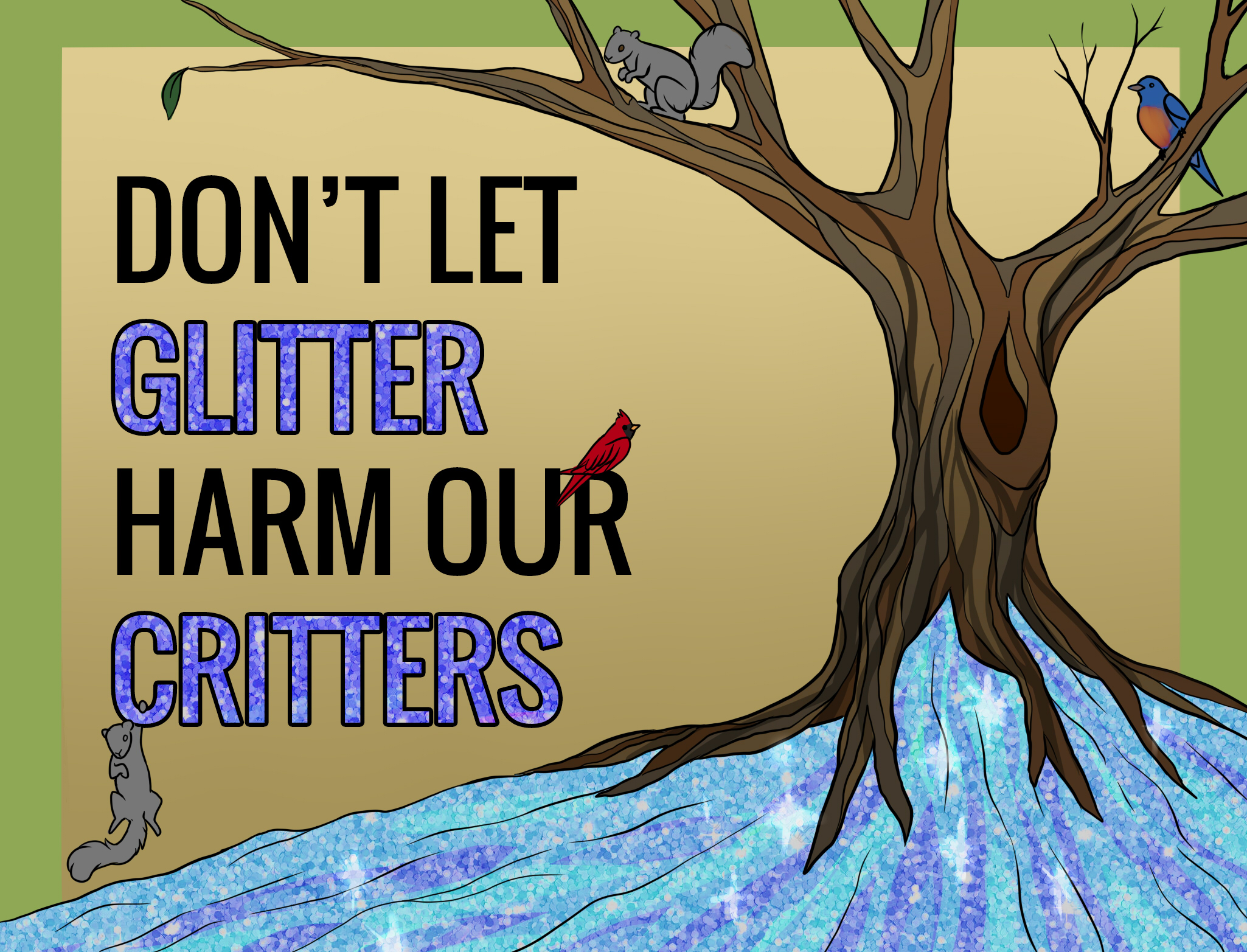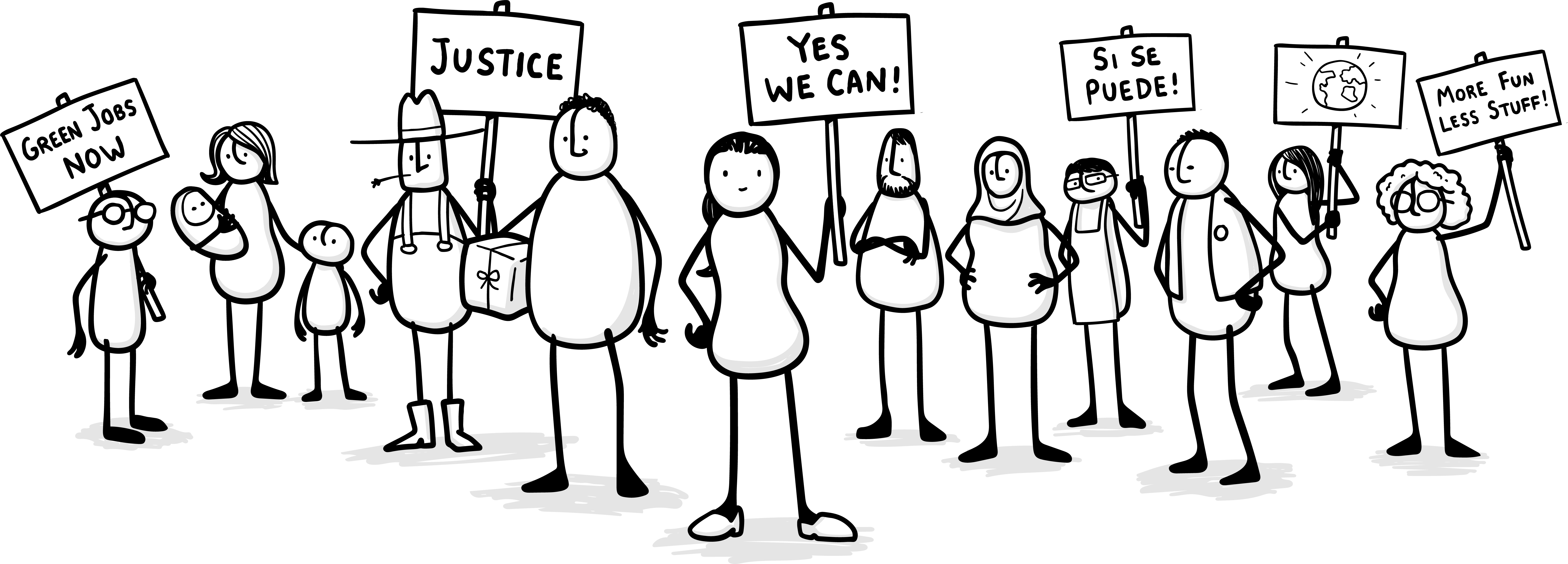On my sister’s fifth birthday my mother threw a fabulous Ariel themed party. There was a mermaid-shaped cake, face-painting, and to top it all off she sent the guests home with gift bags filled with blue glitter meant to mimic the ocean. Almost exactly sixteen years later I learned the unfortunate irony of the blue glitter, when I found out that glitter is a micro plastic contributing to the plastic pollution in our oceans.
Glitter isn’t just used in goodie bags. It isn’t just an annoying substance that gets everywhere. Glitter is in makeup, clothing, textiles, nail polish, crafts, lotions, and so much more. Even if you don’t realize it, you probably own glitter or a product containing it.
If glitter is so small, why does it matter? I spoke with Helene Gardner, an environmental toxicology professor at UCSB, to get the answer to that question. She explained that the smaller the particles are, the worse they are for us. Because glitter particles are so small (typically less than 0.375 mm) they can make their way easily into our eyes, nose, mouth without detection. This is a problem for many reasons, especially because glitter is usually made of polyethylene terephthalate (PET), polyvinyl chloride (PVC), and aluminum (Gwinnet). PET breaks down into toxins that disrupt human and animal hormones, which can lead to many detrimental conditions and even death (Pax). Research has shown that PVC and aluminum are also linked to adverse health conditions such as reproductive disruptions and cancer (Rustagi). Additionally, the small size of glitter particles rules out compostable or recyclable plastic as an eco-friendly alternative. Compostable plastic must be processed in a facility to be broken down or “composted”, and recycling also requires transport to a facility. Now imagine coming home after a long day at a music festival and picking the glitter off your body piece by piece and then ensuring it will make its way to a facility capable of composting or recycling it. Never going to happen, right?
More likely, you will rinse off the glitter and it will make its way down the drain and into the waterway, eventually ending up in the ocean. There, the plastic glitter will accumulate and contribute to the micro plastics building up in our oceans that are too small to remove, or be eaten by sea creatures, break down into toxic chemicals in their bodies, and eventually bio-accumulate in the food web.
Not to worry, there is still hope for your shimmery dreams! Ecofriendly glitter is on the market. But how do you know it’s actually ecofriendly? First, shop from retailers that are transparent about their ingredients. Make sure it says 100% plastic free, and that it breaks down in freshwater and saltwater environments. Also, be sure the ingredients list doesn’t contain PET, PVC, or aluminum. Mica is often used as an eco-friendly glitter, but it often can’t be verified to be ethically sourced. These conditions should be easy to verify on the company’s website. If they aren’t you probably haven’t found what you’re looking for.
I still cherish that memory of the blue glitter, even now when I am aware of the threat glitter poses to our natural environment. I have hope because I know that there are sound alternatives available, and people willing to make the change. Scientists across the world are calling for an all-out ban on plastic glitter. Preschools, music festivals, and some makeup stores in the UK are voluntarily instituting this ban. In 2015, Congress passed the Micro-Bead Free Waters Act, which banned “the manufacture and introduction or delivery for introduction into interstate commerce of rinse-off cosmetics containing intentionally-added plastic microbeads”. This is similar legislature to what we are calling for now, and sets a precedent for a plastic glitter ban.
Will you make the switch to eco-friendly glitter? Will you urge your favorite cosmetic companies to make the switch as well? You can be a part of the change you want to see. Send your favorite cosmetic companies this article, or post on social media telling your followers why you are ditching micro plastic glitter with #plasticfreeglitter. I have attached a list of some of the main cosmetic companies still using plastic glitter, as well as a sample tweet that I encourage you to use. Don’t forget to tag those cosmetic companies! Let’s all do our part to keep our oceans sparkling clean.
Companies still using plastic glitter:
- Elf Cosmetics (@elfcosmetics)
- Milk Makeup (@milkmakeup)
- Tarte Cosmetics (@tartecosmetics)
- Benefit Cosmetics US (@BenefitBeauty on twitter, @benefitcosmetics on instagram)
- Urban Decay Cosmetics (@urbandecay on twitter, @urbandecaycosmetics on instagram)
- Dolls Kill (@dollskill)
These companies need to hear from you! Tweet or post on IG asking them to change their practices:
Sample Tweet: @(insert company) Micro plastic glitter pollutes our oceans and threatens human health. Will you commit to eliminating plastic glitter from your products? #glitterfreeoceans
Sources:
Gwinnett, Claire. “Your Glitter Habit Is Dangerous – Here’s 5 Reasons Why.” ScienceAlert, www.sciencealert.com/environmental-impact-plastic-based-glitter-biodegradable-alternatives-christmas.
Rustagi, Neeti et al. “Public health impact of plastics: An overview.” Indian journal of occupational and environmental medicine vol. 15,3 (2011): 100-3. doi:10.4103/0019-5278.93198
Sax, Leonard. “Polyethylene terephthalate may yield endocrine disruptors.” Environmental health perspectives vol. 118,4 (2010): 445-8. doi:10.1289/ehp.0901253







